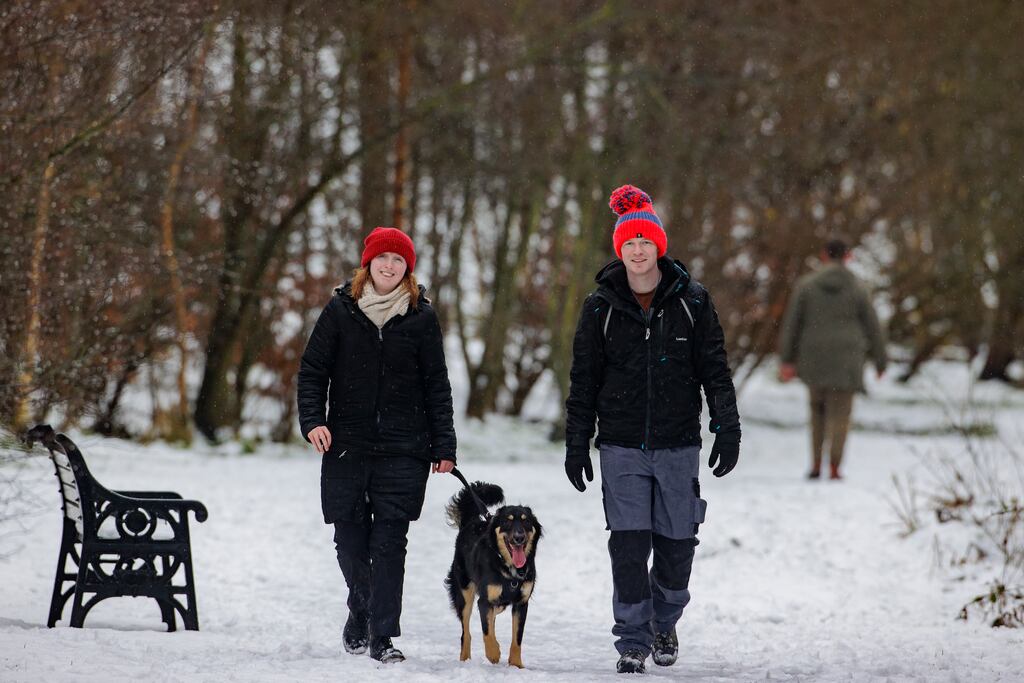Much of January has been marked by a cold period with freezing temperatures dominating and a rare appearance of snow, concentrated in the northwest, in recent days.
In weather terms it is described as a “prolonged cold spell”, says Met Éireann meteorologist Siobhán Ryan.
It was almost as if the country was not used to the return of prolonged frosty nights, icy conditions, freezing fog and daytime temperatures little above freezing. This is because in recent years Ireland has been blessed by very mild winters; great for fighting the worst effects of escalating energy prices but probably another indication of climate change.
Why have we experienced such conditions lately?
In spite of new pronounced trends as a consequence of global warming, which for Ireland means wetter winters, more storms and more intensive flooding, the natural variability of weather still applies on a day-to-day basis.
READ MORE
So when certain conditions arise in the complex interplay of temperature, wind and air pressure in the atmosphere that envelopes the Earth, there is in an inevitable mix of weather.
This has been the case with the past two weeks of cold, though it was marked by two distinct periods.
In the early days of the new year when the country experienced a respite from sustained wet and windy weather, high pressure built from the Azores and became established over Ireland, bringing cold, clear and generally calm conditions with little precipitation – that is, it kept widespread falls of rain and snow away. At that point it was just cold.
In the second week, extremely cold air from the north encroached on the island, meaning heavy snow showers that were concentrated in the northwest – and much colder conditions. The culprit was the “Arctic maritime influence” which asserted itself, Ryan confirms.
This coincided with the coldest nights, with minus 7.3 degrees recorded in Athenry, Co Galway, on Wednesday night, and temperatures reaching minus 6 degrees in many areas on Tuesday night – classified as “severe frosts”. The record lowest air temperature for January – minus 19.1 degrees – was recorded in 1881 at Markree, Co Sligo.
Extreme winter cold is numbing a wide swathe of the US, bringing sleet, snow and freezing rain as far south as Texas
How badly was Ireland affected?
The prolonged cold spell was disruptive, with additional emergency beds opened in Dublin to ensure anyone sleeping rough could access shelter. But it would not be classified as an exceptional winter weather event.
In contrast, extreme winter cold is numbing a wide swathe of the US, bringing sleet, snow and freezing rain as far south as Texas. A powerful winter storm brought snow and blizzard conditions to the midwest and Great Lakes. This was trailed by an Arctic blast, which brought life-threatening temperatures of minus-30 degrees.
Ireland’s relatively benign conditions had compensations; in the form of next no precipitation over the fortnight and above average sunshine. The Greater Dublin Area had 175 per cent of average sunshine for this time of the year while for Erris, Co Mayo, it was 123 per cent.
What is the outlook?
The cold spell is set to come to a rapid end over the weekend with a return to very wet and windy conditions, which has been the predominant pattern since last July.
Since September (the beginning of the official storm season) Ireland has experienced a record number of named storms since naming began in 2015 – if meteorological conditions suggest an oncoming weather system is likely to have widespread impact, they are named by Met Éireann or weather services in the UK or the Netherlands.
Stormy conditions of heavy rain and very strong, gusty southerly winds will arrive by Sunday. Temperatures will by then have increased to a relatively balmy 11 to 13 degrees, but up to three times the normal rainfall is predicted for the coming week.











